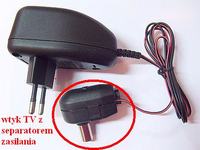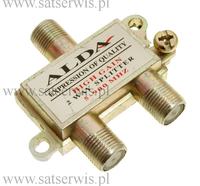Hello.
What does the coaxial cable check look like?
Can I check it with a multimeter set to the diode (i.e. at one end I connect the multimeter: plus to the minus cable to the screen, at the other end I twist the screen with the cable).
It seems to me that in this configuration I should have a short circuit if the wire is good, if the wire is damaged there is no current flow (resistance infinitely great)
And the second question is how to check the antenna and the plate in the antenna, is it working?
I have a problem with the reception of dvb-t television.
What does the coaxial cable check look like?
Can I check it with a multimeter set to the diode (i.e. at one end I connect the multimeter: plus to the minus cable to the screen, at the other end I twist the screen with the cable).
It seems to me that in this configuration I should have a short circuit if the wire is good, if the wire is damaged there is no current flow (resistance infinitely great)
And the second question is how to check the antenna and the plate in the antenna, is it working?
I have a problem with the reception of dvb-t television.




